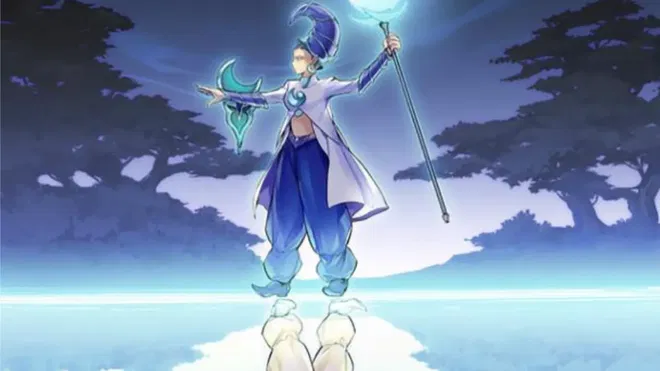Another obscure card has surged in price out of the relatively unknown. This time, it's the Quarter Century Secret Rare (QCSR) that supports an archetype that not many players use in modern Yu-Gi-Oh!
Sol and Luna

Target 1 monster you control and 1 monster your opponent controls; apply the following effect on each monster, depending on its battle position.
● Face-up: Change it to face-down Defense Position.
● Face-down: Change it to face-up Defense Position.
You can only activate 1 "Sol and Luna" per turn.
Sol and Luna release history looks like a fall-from-grace story. This is a card that originally saw release back in the Battle of Chaos expansion in 2022, was reprinted in various high rarities later on in 2024, before finally being reprinted again as a common variant in the Speed Duel: Battle City Finals of the same year (2024).
Recently, the QCSR copies of this card have surged in price. QCSR copies of Sol and Luna were sitting in languish for just over a dollar, roughly a month ago. Now they’re holding steady at about a $5 market average with the occasional flicker to around $7. So far, the market has been holding steady with this version of Sol and Luna.
This kind of market movement seems to be specifically unique to the QCSR copies of Sol and Luna. Taking a look at the other variants of Sol and Luna on the second-hand market, the Super Rare (SR) version of Sol and Luna seems to have a similar growth, but the market value has barely nudged out of bargain bin status, still sitting at less than a dollar.
There are some listings for the original Ultra Rare (UR) version of Sol and Luna, but analytics over at TCGplayer show that these specific versions are regressing in price; going for about twenty cents on average.
A Potential Reason
Given the timing of the market movement, we theorize that some players are trying out this card with the upcoming Enneacraft archetype in Phantom Revenge.
The gimmick of the Enneacraft cards is that they are a faction of Flip Effect monsters with a pretty surprising amount of burn damage and interruption. While most of them can easily act as interaction points whenever the opponent does specific actions, it still doesn’t change the fact that Enneacraft is highly reactionary as a whole.
Notably, this is only speculation at best, but we’re assuming that there are some players who plan to experiment with Sol and Luna as a potential preemptive tool for any of the Enneacraft effects.
Sol and Luna’s Quick Play nature allows a controlling player to flip an Enneacraft monster outside of their usual conditions. Sol and Luna does have the double-edge condition of needing a target as well on the opponent’s side, but makes up for it by being able to flip an opponent’s monster facedown, turning off a lot of standard effects.
So far, there seems to be a general consensus that Enneacraft is an interesting archetype that players would like to play around with, but not necessarily use right away in a competitive set-up due to its inherent nature of using Flip Effect monsters, an archetype that is usually powercrept due to the modern designs of Yu-Gi-Oh!
As for the reason why it’s the QCSR that’s the only variant enjoying this positive trend, we can only chalk it up to collector/player preference.
